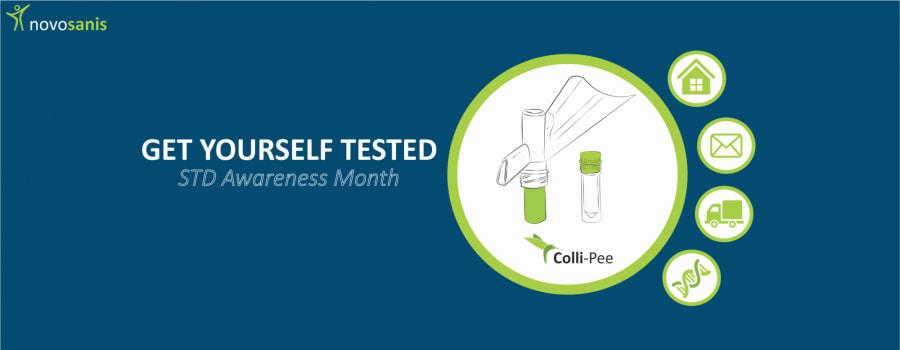Colli-Pee outperforms regular urine cup and offers potential of home-based STI screening
You are here

A recent study conducted by The Institute of Tropical Medicine in Antwerp, Belgium compared a routine clinic-based urine test through a regular cup with home-collected urine samples through Novosanis’ easy-to-use first-void urine capturing device, Colli-Pee for detection of various sexually transmitted infections (STIs) (1).
Urine samples were collected from Men who have sex with Men (MSM) Pre-exposure prophylaxis (PrEP) users, and tested for the presence of Chlamydia trachomatis (CT), Neisseria gonorrhoeae (NG), Mycoplasma genitalium (MG) and Trichomonas vaginalis (TV) using molecular amplification assays. A total of 464 home-collected urine samples were analysed and compared to its equivalent clinic-based samples at three intervals over 18 months.
A high correlation was found between clinic-based and home-collected urine samples for CT, NG, and MG while TV was not detected in any of the samples. 11 new STI infections were detected only in home samples and were not reported in the equivalent clinic-collected sample, highlighting the importance of first-void, and not a random urine sample in STI detection. Previous studies have also demonstrated that first-void urine significantly improves diagnostic sensitivity of STIs as it contains more DNA and RNA particles well as other analytes than other fractions such as a random or midstream urine sample (2;4).
Even though the study is limited to a specific target group, it shows that postal delivery and home-based collection through a first-void capturing device like Colli-Pee positively influences the quality of STI testing, offering the ability to reach a wider population, especially high-risk individuals or participants that are reluctant to access traditional STI health services. A study in France showed that home-based sampling over the internet increased frequency of Chlamydia screening by three times in young people (3), further demonstrating the potential of home testing and eHealth methodologies. Performing a test independently at home also means results can be made available to a physician at the time of the first consultation, improving patient flow as well as allowing treatment to begin immediately. These approaches could dramatically influence the way STIs are screened for and detected in the future.
Want to know more: Find the results of the study here.
References:
(1) De Baetselier I, Smet H, Abdellati S, De Deken B, Cuylaerts V, Reyniers T, Vuylsteke B, Crucitti T. Evaluation of the 'Colli-Pee', a first-void urine collection device for self-sampling at home for the detection of sexually transmitted infections, versus a routine clinic-based urine collection in a one-to-one comparison study design: efficacy and acceptability among MSM in Belgium. BMJ Open. 2019 Apr 3;9(4):e028145. doi: 10.1136/bmjopen-2018-028145. PubMed PMID: 30948618.
(2) Chernesky M, Jang D, Chong S, Sellors J, Mahony J. Impact of urine collection order on the ability of assays to identify Chlamydia trachomatis infections in men. Sex Transm Dis. 2003 Apr;30(4):345-7. PubMed PMID: 12671557.
(3) Kersaudy-Rahib D, Lydié N, Leroy C, March L, Bébéar C, Arwidson P, de Barbeyrac B. Chlamyweb Study II: a randomised controlled trial (RCT) of an online offer of home-based Chlamydia trachomatis sampling in France. Sex Transm Infect. 2017 May;93(3):188-195. doi: 10.1136/sextrans-2015-052510. Epub 2017 Apr 4. PubMed PMID: 28377422.
(4) Pattyn J, Van Keer S, Biesmans S, Ieven M, Vanderborght C, Beyers K, Vankerckhoven V, Bruyndonckx R, Van Damme P, Vorsters A. Human papillomavirus detection in urine: Effect of a first-void urine collection device and timing of collection. J Virol Methods. 2019 Feb;264:23-30. doi: 10.1016/j.jviromet.2018.11.008. Epub 2018 Nov 16. PubMed PMID: 30452931.
